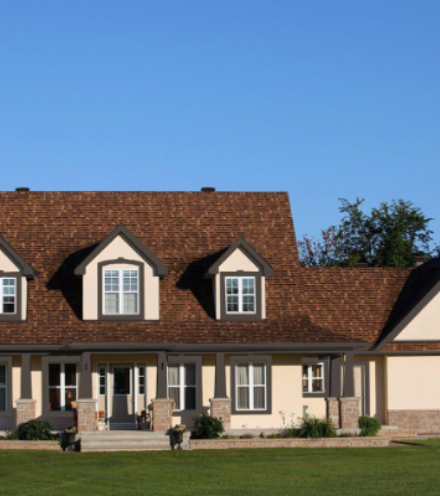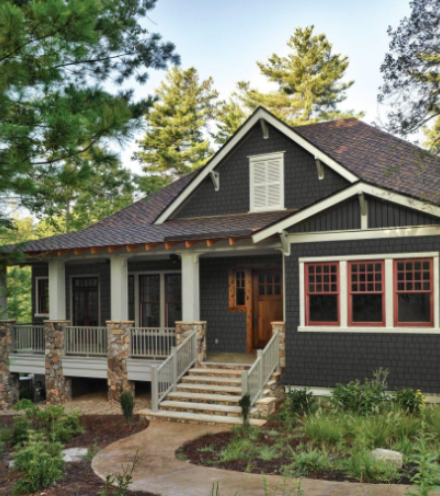When most people think about siding their homes, their first thought usually goes toward wood. After all, wood is one of the oldest siding materials still in use today. It comes in a variety of sizes and styles, and can be painted or stained a wide range of colors to help give your home a custom look.
Wood Siding Problems
However, there are many wood siding problems that go hand in hand with these benefits. It’s for this reason, that while many people do think of wood siding first, they ultimately end up choosing something else entirely. If you’re considering wood for your home, be sure to consider these five wood siding problems first, so you can make a more informed decision.
1. Maintenance
The single biggest reason that most people end up choosing not to use wood siding on their homes has to do with the associated maintenance. Wood is a porous material that can absorb moisture over time, which means that it must be protected from the elements to prevent problems with mold or rotting.
This means that the wood needs to be stained or painted at all times. And because stain and paint on a wooden surface has a tendency to peel, chip, and flake, over time the wood itself becomes exposed to the elements, requiring you to scrape it down and re-apply the paint or stain. This, in turn, leads to expensive upkeep and maintenance that needs to be performed regularly.
2. Durability
Durability issues for wood siding go hand in hand with its need for maintenance. Wood can and will absorb moisture over time. If this moisture becomes trapped or if the wood is exposed to moisture for long stretches of time, it will begin to soften and rot or it may begin to grow and harbor mold colonies.
In either case, once the integrity of the wood has been compromised, it can no longer do its job of protecting your home. If this happens, you will need to replace the affected boards, particularly those affected by mold, as it may spread and cause future problems.
3. Swelling and Warping
Even small amounts of moisture can sometimes be a problem with wood siding. If your wood absorbs moisture, it may swell or warp, even when it eventually dries out again, it may not return to its original state. Now, you may have sections of your siding that are wavy, bent, or pulling away from the rest of the structure.
Wood siding that is too close to the ground or that does not have a rain screen or some other form of protection is particularly prone to these issues. Wood planks and shingles too close to the ground are more likely to swell, warp, or rot, leaving your home with uneven looking contours.
In very dry climates, the opposite can also occur. The wood siding on your home may dry out to the point that the boards or the planks shrink. When this happens, you may get gaps between the boards or gaps around your windows and doors. This can reduce the energy efficiency of your home, encourage insect penetration, and impact its appearance in a negative way. T1-11 siding, for instance, is limited in both durability and functionality.
4. Inconsistency
There are hundreds of different species of wood, many of which can be used as siding or shingles. Not all of these are of the same quality, however, which can lead to additional problems. Tropical hardwoods are less likely to have issues with durability or warping, but are expensive and very difficult to work with and install.
Softwoods are more sustainable, less expensive, and easier to work with, but they don’t last nearly as long as hardwoods do. This means that you’ll spend a great deal of time trying to determine which wood is right for your home. Wood may also be treated, either with heat or chemicals, to change the way that it performs. All of this means that unless you’re willing to put in a lot of research, you may not even know what is being installed on your home, or if it’s the best for your climate and needs.
5. Not Always Environmentally Friendly
In today’s building industry, green design is one of the hottest and important considerations in building materials. And while some types of wood are more sustainable than others, wood itself is rarely considered to be a truly green product.
In part this is due to harvesting of the material; hardwoods make a better product, but take much longer to grow and reproduce. All of the maintenance that your wood requires also impacts the environment by releasing harmful VOCs into the air. And any chemical treatment the wood undergoes to make it more durable or less prone to issues like fire or insect activity often means that it’s less healthy for you and for the environment as well.
Make a Better Choice
While wood may be a versatile and attractive covering for your home, it’s associated issues often make it a poor choice. If you’re looking for something more durable with lower maintenance and less of an impact on the environment, consider fiber cement siding. Available in all the same shapes, styles, and textures of wood, fiber cement siding out performs it in every other way. Make a better choice for your home with fiber cement and leave the problems of wood siding in the past.




